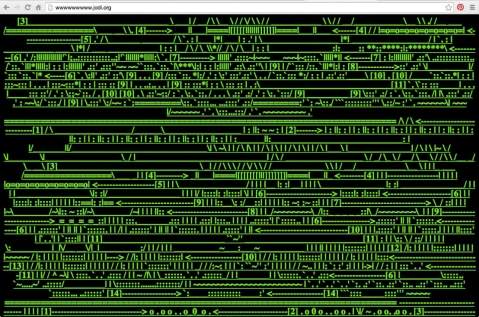The Internet as a Space for Digital Art
| ✅ Paper Type: Free Essay | ✅ Subject: Arts |
| ✅ Wordcount: 4466 words | ✅ Published: 23 Sep 2019 |
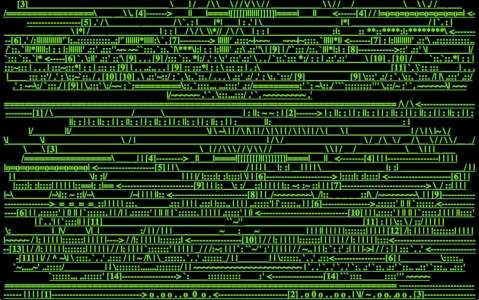
Jodi.org
SpACES
Jodi.org: How does the spectator engage with the digital art?
Medium for an artist is an essential factor when it comes to any artwork. A net artist uses the Internet as their canvas and the computer as their paintbrush. Within my review, I will be answering the questions – how the viewer sees the Internet as a space for art, how does a website that is not fully active, through the spectator’s interaction. After, I will be able to identify, when a website is passive or active.
Throughout researching on my topic and to support my argument, I will be referencing to, Bruce Wand’s Art of the Digital Age, Omar Kholeif’s You are Here: Art after the Internet and Alison Colman’s Studies in Art Education, focusing on the chapter, ‘Net.art and Net.pedagogy: Introducing Internet Art to the Digital Art Curriculum’.
To end, I will be concluding with an argument towards my main question: How does the spectator engage with the digital art?
The Internet and Digital Art
How does the viewer see the Internet as a space for art?
The Internet is a space that has been around since the late 20th century and today it has  grown massively throughout the world. It comes from the development of computer science in the 1960s and it was initially tested and created in the United States and in the United Kingdom. It primarily began as a way to share documents and other pieces of software globally by using the World Wide Web. To
grown massively throughout the world. It comes from the development of computer science in the 1960s and it was initially tested and created in the United States and in the United Kingdom. It primarily began as a way to share documents and other pieces of software globally by using the World Wide Web. To day, we still use it as it was meant to be used for, but it has been increasing since then. Now, the platform has websites where we can interact with other people (e.g. Facebook), to watch endless hours of videos (e.g. YouTube) or even to create art – which the term net art was originated “to refer to a strain of Internet art that emerged soon after the invention and wide take-up of web browsers in the mid-1990s” (Stallabrass, 2003, pp.49). Net art is the term for what the artist creates but the field of study is known as digital art.
day, we still use it as it was meant to be used for, but it has been increasing since then. Now, the platform has websites where we can interact with other people (e.g. Facebook), to watch endless hours of videos (e.g. YouTube) or even to create art – which the term net art was originated “to refer to a strain of Internet art that emerged soon after the invention and wide take-up of web browsers in the mid-1990s” (Stallabrass, 2003, pp.49). Net art is the term for what the artist creates but the field of study is known as digital art.
Digital art in the contemporary term can be described as art made from “the digital realm, [which] include[s] virtual reality software art and net art.” (Wands, 2006, pp.11) It is all about the evolution aspect within art and the world, as “photography itself evolved from drawing and painting” (Wands, 2006, pp.11), net art has evolved from photography and film.
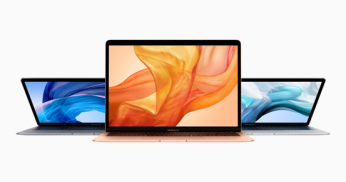
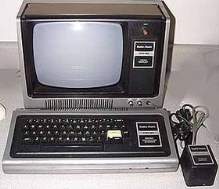
Figure 2 MacBook Air 2018
Figure 1 1970s Computer
Like the Internet today is a big part of our society whether we want to deny it or not, it’s all around us. So, instead of escaping it, let us dive into what we can create. As artists, there has been software created specifically for art. We have Photoshop, Illustrator and Paint (Windows 7), one of the first software to come installed on your own computer; and the Internet allows us to create websites where we can include everything and anything. Personally, I have used WordPress, Wix and even Instagram as a way to store work created by myself to share with friends and people over the world or even to share another people’s work. Each website has its advantages and disadvantages when it comes to creating something and it all comes down to what you want to share, what space on the Internet is going to benefit you and how do you want to display your work.
Moreover, the Internet is a space where we can distribute art, as a hobby or as a commercial place. Nowadays, not only artists but people that have a business or what to start one, can simply create a website and sell their own products from home. Writers today can self-publish books and sell them directly from the Internet without going through the chaotic and expensive process of getting an agent or a publishing agency. I would say that the Internet can be helpful in whatever you need advice on but there is the downfall of, what if the Internet got shut down tomorrow? Would you be able to live without it? It all comes down to how much of the Internet do you let it run your life, and would you be able to manage your life without it today? Would the artworks be lost on the Internet?
In the text, Net Art and Net.pedagogy: Introducing Internet Art to the Digital Art Curriculum’ from Studies in Art Education, Alison Colman informs us that Internet art does not have a canon. That there are well-known works out there and she references Jodi.org as one of them but Internet art is art that people do not really know about until they actually go and try to find it. Normally, to see art, one goes to an art gallery or a museum and they see, sculptures, paintings, ceramics and even fashion (clothing, accessories) but not really the Internet for viewing digital art, per se. Today, some people will know what Internet art is, but I still think it is a foggy subject and Colman experiments that theory. Colman arranged a 6-week college project for students “at a college preparatory inner-city high school located in a Midwestern metropolitan area”, (Colman, 2004, pp.64) and she introduced them to Internet art and showed them some examples. Her findings were that before explaining what the website was and how to go through it, the students just gave up and thought that it was too complicated to interact with. What is the difference between a normal website than an Internet art website? How could they define the difference? Students didn’t know what Internet art was and how to access it. They had not been introduced to art like that before. So, Colman explained what each website was and its purpose. How to interact throughout the website and then, she asked, what did they think about it? The students became aware of Internet art through explaining because of how encrypted and abnormal it was for someone that did not understand about computer programming or software codes. (Colman, 2004)
The purpose of informing people about Internet art is to show its evolution today. Even though Colman’s text was written in 2004, and there has been new art since then, there may be a canon of Internet art resurfacing soon, I would suspect. The Internet has been growing massively, it has become a site for art production, and I will be analysing a specific website to understand more about the Internet’s function for the art world.
Is the Internet a private or a public space, or both?
“between public and private space is that it is not merely two spaces that are involved but a public space and a vast number of private spaces; each private space belongs to someone, and the presumption then is that there are as many such spaces as there are expedients, human and non-human, capable of apprehending spatial distinctions.” (Lewis, 1952-53, pp.79)
The Internet seems to be a public space because of how everyone can publish anything online and everyone is able to see it. On the contrary, the Internet is more a private space than it is public. An example that most people have gone through is when it comes to creating an account on a social media platform. By creating an account on Facebook, Twitter or Instagram there is a Terms and Conditions form that asks you to read it and accept for you to proceed with your application. Now, as you tick the box to accept its terms, you are, in a way, signing a contract and as when you sign a contract or an application in real life there is always someone on the other side of that contract. Meaning, that the Internet is controlled by someone and the Internet becomes a private sector instead of a public space. Stephanie Bailey (2014) in Omar Kholeif’s You are Here: Art after the Internet, confirms my statement by stating, “The Internet – like real space – is not public at all. It is negotiated, managed, contested, and contracted. A place where divisive lines between public and private are mediated, challenge, and even dissolved.” But is there any part of the Internet that’s public?
To answer to that question, we need to look at the Internet from a different viewpoint; if you take the action of only a spectator, and a spectator only, then yes. The Internet can be a free space for you to navigate without any consequences. If you are just a visitor on a website or watching a video on YouTube, there aren’t any requirements that you need to sign and so you are publicly on the internet with no concerns. With “images, music, and words now become drops in a pool of derivative sweat created by working out their central themes and displaying them publically online for all to view.” (Troemel, 2014, pp.42) If someone publishes a public file to the internet, you have public access to it – meaning – that you are able to interact with it fully and with no restrictions whatsoever.
The Internet can be used for a diverse usage when it comes to art or even in general day-to-day life. Consumerism is another aspect that we can use the Internet for, as “the impact of the Web is not only sociological but economical, political, existential, psychological, epistemological: it is total. The Web radically modifies public and private spaces and times-and deeply alters public–private relationships. This technological framework became a new public space and a new public time – with the growing danger to be privatized.” (Bailey, 2014, pp.130) A website becomes private when the creator of that website decides to make it on not. It’s not up to us to decide whether it’s private or public. When it comes to social media, e.g. Instagram, we can make our accounts private or public whether we want just our friends to see our posts or the whole wide world. There is the setting for it and if you want to see their page, all you have to do is send a request to the profile user; there is a privacy sector which interlinks with private but if someone wants their privacy within just friends they can do so, and that is up to the creator of that page/profile on Instagram or any other social media platform out there.
Jodi.org
Jodi.org – a collaborative net art project developed by Joan Heemskerk and Dirk Paesmans. The website consists of HTML software that has been found through the Internet and how it has fragmented the world of the Internet. It contains errors that may have been created by a virus or a system failure. It is a wondrous website that can leave you exploring for hours but also a trap for you to get lost in its wonders. The function of Jodi.org becomes a story to tell us about the accidents of the Internet and how the Internet can fall apart.
Both artists have experience in working with software and an understanding of the context of the Internet because they have worked in the past on computer programming for major companies, e.g. Netscape.
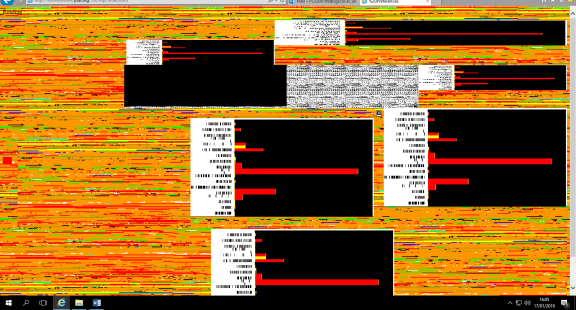
Figure 3 Heemskerk, J. & Paesmans, D. (c. 1990s) Jodi.org [digital software]. At: Internet: World Wide Web.
Websites can be a way to inform you and to teach you on a certain subject and these are known as “typical websites” (Colman, 2004, pp.69) which can be used throughout your daily basis. With net art websites, it is more to admire and explore in a more informal way (they can also teach you and inform you too) and “you don’t know what to expect. You don’t know what will happen when clicking on certain links” (Colman, 2004, pp.69). This contrasts well with how Jodi.org was created.
Investigating and exploring a website, we usually get a sense of guidance and how to interact throughout it, and I have come across the term, sitemaps. A site map is a bar of contents that a website should have throughout each page with icons to go back to the home page and other content links about the specific website. With the Jodi.org website, there is not any bar of contents. Meaning that the endless website could run for a series of pages and we would not be able to go back through the same stages as we went through previously. And I continue, as to say that it does not have a structured, helpful and simple way of interacting with the website, could be because of what it wants to show. Jodi.org was created to show us what the Internet can do as a negative point of view, and the website was created in a dysfunctional context for people to see the real meaning of chaos and error on the Internet. How is the Internet affecting with emails, websites, and even the encrypted codes shown through the website could be about personal information without us even knowing? How its patterns would be identified by the non-tech viewers. Paesmans and Heemskerk explain that they used a “few hyperlinks and when they do they are difficult to find, forcing the viewer to explore other means of navigation.” (Colman, 2004, pp.63) With that, I can interpret this quote by saying that it’s all about a treasure hunt through an endless maze and how many mysteries can we find out about the Internet and what it may be hiding from us until we get to some sort of conclusion.
Jodi.org focuses on gathering all these unfortunate events that the Internet has caused and chooses to present it in the same platform that they are talking about. There is a sense of irony because of how the Internet is often celebrated for its positive effects, whereas Jodi.org celebrates where the Internet goes wrong. This leads me to discuss whether or not the digital can be considered a real space. As Hill states:
“If a place can be defined as relational, historical and concerned with Identity, then a space which cannot be defined as relational, or historical, or concerned with identity will be a non-place” (Hill, 2010, pp.2483).
The Internet is a place where you can visit anonymously without leaving any trace that you were ever there, but it can also leave a trace depending on what you do. With the Jodi.org website, there is not a way to track your surroundings, because it is a non-place. Its identity is obscure and there is not a real connection to the website. You can visit freely but you do not feel like there is a way of belonging there. So, “in the non-place the individual becomes anonymous and so is divested of responsibility” (Hill, 2010, pp.2483) to explore it on our own and to follow what it is given to use while we uncover its secrets. With personal data being divulged, even if illegible, therefore, returning its responsibility to individuals.
Is Jodi.org glitch art?
Glitch art contains examples that could be linked to Jodi.org – especially when it talks about that glitch art interacts with the “mistakes” of the internet and how to make it art. Glitch artists pick their content and their context around a glitch that has happened and to make it their own, they “change the colours of the glitches (to make them fit [the artist’s] sense of aesthetic), but [they] never edit the structure, other than cropping and stretching horizontally or vertically. Remember, you cannot have half a pixel!” (Jonas, 2013) The glitch still is kept in its original form and the artist manipulates it to their need and to the function that they need the glitch to be.
I would suggest that Jodi.org created their webpages with the same medium as a glitch artist would but they are not seen as glitch artists and more as net artists. Heemskerk and Paesmans are seen as working with the medium of the Internet through the 1990s – onwards which they have been placed in that category because glitch artists may work with the Internet but also outside of it when it comes to manipulating its content. Glitch artist’s work is not fully created with the Internet as its medium. Also, glitch artists exhibit their work outside the Internet, as with net artists their medium is their exhibition space as well.
Internet as being a non-space, I will be exploring its activeness and passiveness when the spectator encounters digital art in the realm of the Internet as a space for art.
Active vs. Passive
How can a website that is not fully active, become active, until someone becomes part of the artwork itself? When does a website become passive or/and active?
A website only becomes active when someone is using it, but it can run on its own if the settings of that website allow it to do so. Another way to keep it active is if someone runs it but other people come to explore it after. As an endless candle that never runs out of its flame. Let’s take the example of a shopping website, e.g. Amazon. Amazon has its creator and sellers that post their products on the website. Amazon is making the website active for the sellers and then the sellers make it active too, for the buyers to get interacted and to buy what they want throughout the website. The creator of Amazon only made the website and then the public makes it active between us. That’s not to say that the Amazon’s creator is passive because they’re not. They also put Amazon merchandise on sale for people to buy and interact with their products as well.

Figure 4 Screenshot of Amazon.co.uk
A passive website is more about, what happens when you close the website’s tab from the Internet and is no longer there. It comes down to each person and not the website. If I explore a website today, it is active but if I don’t go there tomorrow, it is passive. But it can be active for someone else today and tomorrow, whether someone visits a website daily or weekly and so on. Any website out there is always active and never passive, only when its creator shuts the website down and there are no more traces of it on the Internet. People are always exploring the Internet, so a website is always opened somewhere on the World Wide Web (www). An example for this can be a website that I have recently come across with and seems to relate to what I am referring.
Google Arts and Culture is a website that shows you insights on museums and galleries across Europe and many more. I looked at street view tours of a few galleries and I realised that one may be able to see a space of art from home before actually going there (as a way to plan a trip) and see the unexpected. A question brew from this experience because if someone sees a piece of art online and then goes and sees it first-hand – which one is the original and which one is the duplicate for that person. Does the online version artwork that you saw first become your original or not. A further point could be that if the artwork for some reason decays drastically or gets damaged severely and is no longer available to be viewed at a gallery/museum – what would happen next? That artwork would still be able to keep on living in the online world and then, what would we be seeing? The “real” artwork or merely a copy of the original. With this example in mind, the same thing could happen to a website. Let’s say that the creators of Jodi.org decide to remove the website from the Internet, would we still have any traces of it or would it be removed forever? With the research that I was able to find out – there is books and articles about the website and the creators which that would be a way of preserving the website but I was also able to find videos on YouTube.
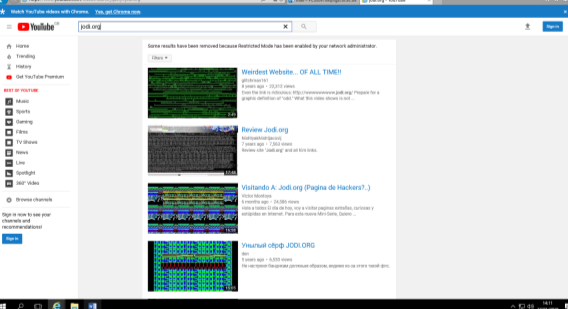
Figure 5 Screenshot of YouTube results on Jodi.org
In these videos, I saw people interacting with the website and recording themselves going through it and trying to define what the website actually is about. I decided to take some action and see the website for myself.
When I visited Jodi.org there was a sense of performance being shown through my actions, I undertook the role of the viewer and the active member. I choose where to move my mouse over and to what I wanted to click on. What I found interesting in exploring further was how someone else that visited Jodi.org would probably create their own path within the website – opposite to the one I went on. Without me, the website would not go further on its own, it would stay passively in the same page as it would appear in the moment that I pressed to open the website link. Almost as a book needs a reader, and the reader makes the story active by imagining it and making it real in their own minds.
As a way of interaction, not only did these visitors were the active spectators on the website as was I but they stepped inside it and recorded their explorations. If you watch two videos or more their conclusions are always different and that means that there isn’t a way to guide yourself between Jodi.org – as I mentioned previously there are endless ways of getting lost within this endless maze. In fact, when I first encountered the website, I initially thought that a virus or some sort of glitch was on the computer or there was an Internet failure. Which made me think, how Jodi.org was created:
“We use certain elements, like a virus, whether a virus is present, or whether things go wrong with somebody’s ‘cache’, somebody’s personal computer. A lot of these elements are collages of things that are found on the net. The natural environment of us, of Jodi, is the net and you can find a certain condensed form of the net in Jodi.” (Josephine Bosma, 2010)
Although there are rumours that the website could possess a virus, it is not clearly stated. With that, I would suspect that if Jodi.org is a possible virus, it could run passively and actively. It could spread on its own and without someone even noticing it. That’s where the activeness of the website can come through, if it is actually a virus, it can run through the computer without even having the Jodi.org website opened. The passive aspect is that the virus would run on the background without the user seeing or touching it.
Conclusion
How is the interactivity between digital art and its spectator?
The Internet was invented for a purpose and today as it seems we have a wide knowledge over it. We can make everything and anything with it as if it was a magic wand that it is always there at our disposal. With digital art today, there is a lot of artists using the craft and they are able to create outstanding pieces of art within the space of the digital world and its surroundings. The Internet is definitely a space to view art and to install art. Today, artists not only create art with the Internet but they also use it as a way to share and keep art for others to see and to even purchase it with an online store. The world of the Internet is still obscure when it comes to what we can do, and not do. There could be more parts of the Internet that we may haven’t discovered yet. This platform overall doesn’t have a clear, specific identity when it comes for us to characterize it into the public or private sphere. As we were able to find out, each website can be put out there with a public or private setting – by how the creator sets it up to be. With a social media website, we know that it is private because we need to accept some sort of application requirement but with a website, such as Jodi.org – it is public because everyone can access it and you are free to explore however you want to. Jodi.org is truly an inescapable website when it comes to admire the art of the Internet and to also learn about it too. I found it to be an exploration that could definitely be expanded on. Not just me but as I have referenced before, there are more people viewing the website and recording their interaction with it and saying what they think about it. As for myself, I think that Jodi.org is an endless, digital wonderland that keeps on opening door after door. The activeness of the website is a bit unclear, as it will always be – the creators (Heemskerk and Paesmans) informed us that it was a collage and one of the elements could be a virus, but is it? Whether it is or not, the website still keeps on running and until it stops it will always be a piece of digital art floating on the Internet. It is clear that a percentage of the people in the world don’t have access to the Internet and they may never see the digital world but this could be an insight to get more people interested in seeing art in a new platform and to also give a brief understanding of what it actually is and can do – and who knows – in a few years the Internet could be the evolution of something new for people to see art in another platform that’s yet to come.
Bibliography
Books
- Wands, B. (2006) Art of the Digital Age. London: Thames & Hudson Ltd. (pages 8-31, 184-189)
Websites:
- https://www.jstor.org/stable/10.1525/si.2011.34.4.490?seq=1#metadata_info_tab_contents
- https://www.jstor.org/stable/3497096?seq=1#metadata_info_tab_contents
- https://www.jstor.org/stable/1577255?seq=1#metadata_info_tab_contents
- https://www.jstor.org/stable/25224185?seq=1#metadata_info_tab_contents
- https://www.jstor.org/stable/23011053?seq=1#metadata_info_tab_contents
- https://www.jstor.org/stable/43080245?seq=3#metadata_info_tab_contents
- https://www.jstor.org/stable/4189307?seq=1#metadata_info_tab_contents
- https://www.jstor.org/stable/4544511?seq=1#metadata_info_tab_contents
- http://jonas.do/assets/essays/glitch-art-jonasdowney.pdf
- http://www.josephinebosma.com/web/node/39
Cite This Work
To export a reference to this article please select a referencing stye below:
Related Services
View allDMCA / Removal Request
If you are the original writer of this essay and no longer wish to have your work published on UKEssays.com then please click the following link to email our support team:
Request essay removal